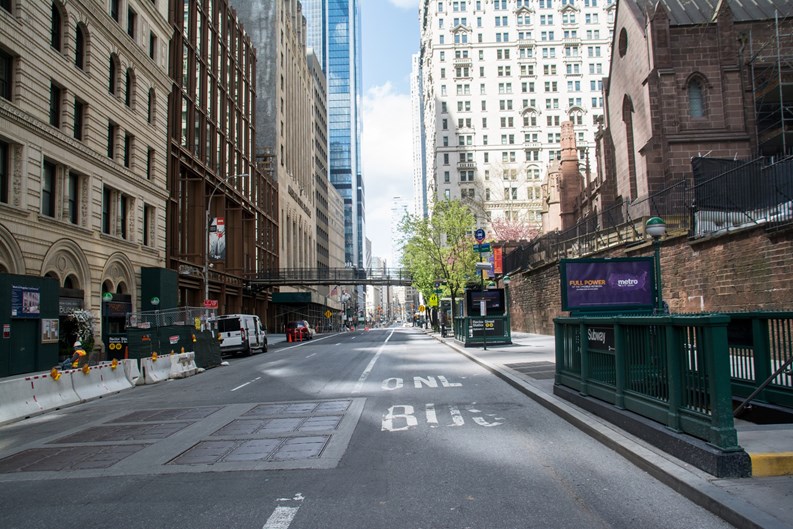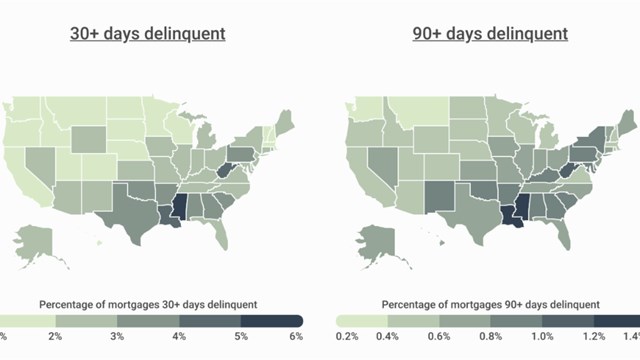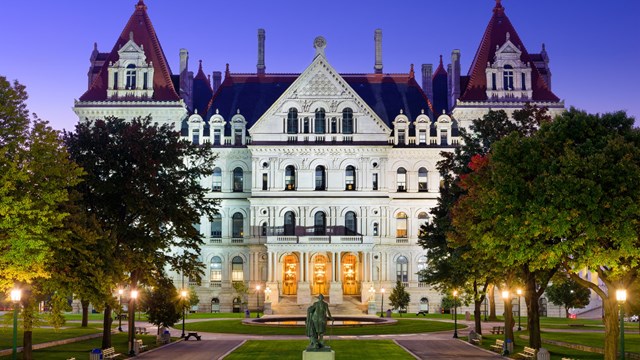According to a recent report in the New York Times, “hundreds of thousands” of New Yorkers left the city as the coronavirus pandemic gripped the five boroughs between March and May 2020, fleeing to second homes, vacation cottages, and the homes of relatives to avoid the virus and its attendant inconveniences. The exodus was primarily concentrated in the city’s richest neighborhoods, according to the article’s analysis of aggregated data from smartphones and other sources gathered by a trio of contributors, including geospatial analysis consulting firm Descartes Labs, data analysis firm Teralytics, and researchers at New York University.
According to the Times, “Roughly 5 percent of residents — or about 420,000 people — left the city between March 1 and May 1. In the city’s very wealthiest blocks, in neighborhoods like the Upper East Side, the West Village, SoHo and Brooklyn Heights, residential population decreased by 40 percent or more, while the rest of the city saw comparably modest changes.”
While a fair percentage of the departures were due to large blocks of student housing emptying out as colleges and universities shuttered, the paper’s analysis of neighborhood income levels indicated that the wealthier a given area, the higher the percentage of leave-takers. The pace of departures also picked up significantly when Mayor de Blasio announced the closure of all schools in mid-March.
Measuring the Migration
The article makes the point that while the data collected is certainly useful smartphone location data is imperfect. For one, “It misses people who don’t own a smartphone. It requires some guesswork about who is a resident rather than a visitor or commuter. It relies on the kinds of apps that track and transmit a user’s precise location. And it is unlikely to be perfectly representative of the general population.”
Other methods to measure quick changes in population on a large scale were also considered, along with data. The volume of household garbage collected by the Sanitation Department was also below average in wealthy neighborhoods, for example.
According to the Times, the research contributors’ estimates differ in some ways (like how they define a New York City ‘resident,’ the exact time interval studied, and the distinction between moving away and just visiting somewhere else. “But,” says the article, “all point to the same conclusion: The city’s population decreased by 4 percent to 5 percent, and the residents who left were overwhelmingly from the city’s wealthiest neighborhoods, chiefly in Manhattan.” The residents from these places are mostly white and college-educated, and more than half of them have annual incomes over $100,000; nearly a third earn more than $200,000. They’re more able to work remotely than lower-income residents, and ‘essential workers’ who are less likely to be able to take time off or really shelter in place as per the mayor and governors’ orders.
Where Did Everybody Go?
For the most part, the Times data suggests that those who opted to get out of Dodge didn’t go far. Most scattered to Long Island (particularly the Hamptons), Northern New Jersey, Westchester, and Connecticut. Some went farther afield, opting for Palm Beach County and other parts of Florida.
While the exodus of affluent city-dwellers during times of crisis raises plenty of complex issues in the current fraught sociopolitical context, it certainly isn’t new. The Times points out that “Fleeing a city during a time of crisis...applies not just to pandemics, but also to hurricanes, nuclear accidents, invading armies, agricultural disasters and other such events,” and quotes NYU history professor and author Kim Phillips-Fein, who says, “There is a way that these crises fall with a different weight on people based on social class. Even though there’s a strong rhetoric of ‘We’re all in it together,’ that’s not really the case.”
Click here to read the full article, including multiple detailed data maps: https://www.nytimes.com/interactive/2020/05/15/upshot/who-left-new-york-coronavirus.html







2 Comments
Leave a Comment